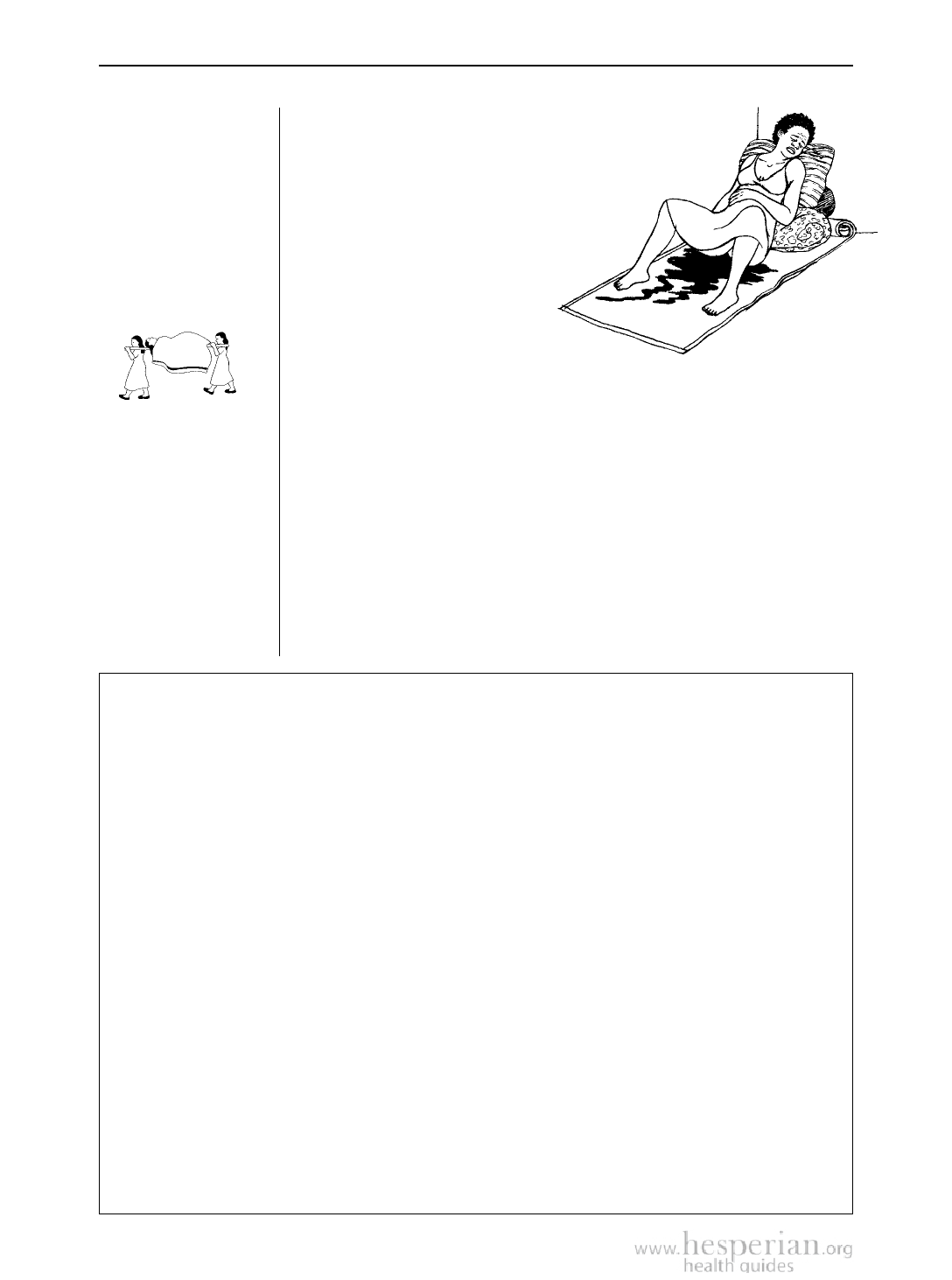
92 Pregnancy and Childbir th
TRANSPORT!
Too much bleeding (hemorrhage)
It is normal for a woman to bleed a little after
childbirth. But bleeding is a serious
problem if it does not stop within an
hour after birth, or if there is a lot
of blood—more than 2 cupfuls,
or enough to soak through
2 thick rags in an hour.
What to do:
1. Take the woman to a hospital.
2. While you are transporting her, do the following.
For too much bleeding before the placenta comes out:
• Ask the mother to squat and push the placenta out.
• Ask her to pass urine.
• Put the baby to the mother’s breast to start suckling.
If the baby will not suckle, have the mother roll her nipples
or have someone else suck on her breasts. This will help her
womb contract and push the placenta out.
• If you have it, you can also give 10 units of oxytocin
by injection in the buttock or thigh, or give 600 mcg
(micrograms) of misoprostol by mouth, one time only.
If the mother is too weak to deliver the placenta herself or if she is bleeding
so heavily she becomes faint, take the mother to the nearest hospital. While
you are transporting her, you can try to help guide the placenta out. Only do this
if you believe the woman’s life is in danger. First look for signs that the placenta
has separated.
1. Mark the cord by tying a clean string around it about a hand’s width from the
opening of the vagina.
2. Put one hand on the mother’s abdomen just above her pubic bone. Wait until
her womb feels hard and then push upward toward her head.
3. If the string you tied to the cord moves toward the mother, the placenta is
probably still attached to the womb. Do not try to guide it out.
If the string on the cord does not move, the placenta may be lying in the vagina
and you can try to help guide it out.
4. With your other hand, hold the cut end of the cord (a dry cloth will help), and
pull slowly and firmly. Do not pull hard. If you do not feel the placenta moving
down, stop.
5. When the placenta comes out, squeeze the top of the womb with one hand
until it stays very hard. At the same time, push the bottom of the womb
upward with your other hand.
6. Give fluids either in the vein (IV) or in the rectum (see page 541).
Where Women Have No Doctor 2012